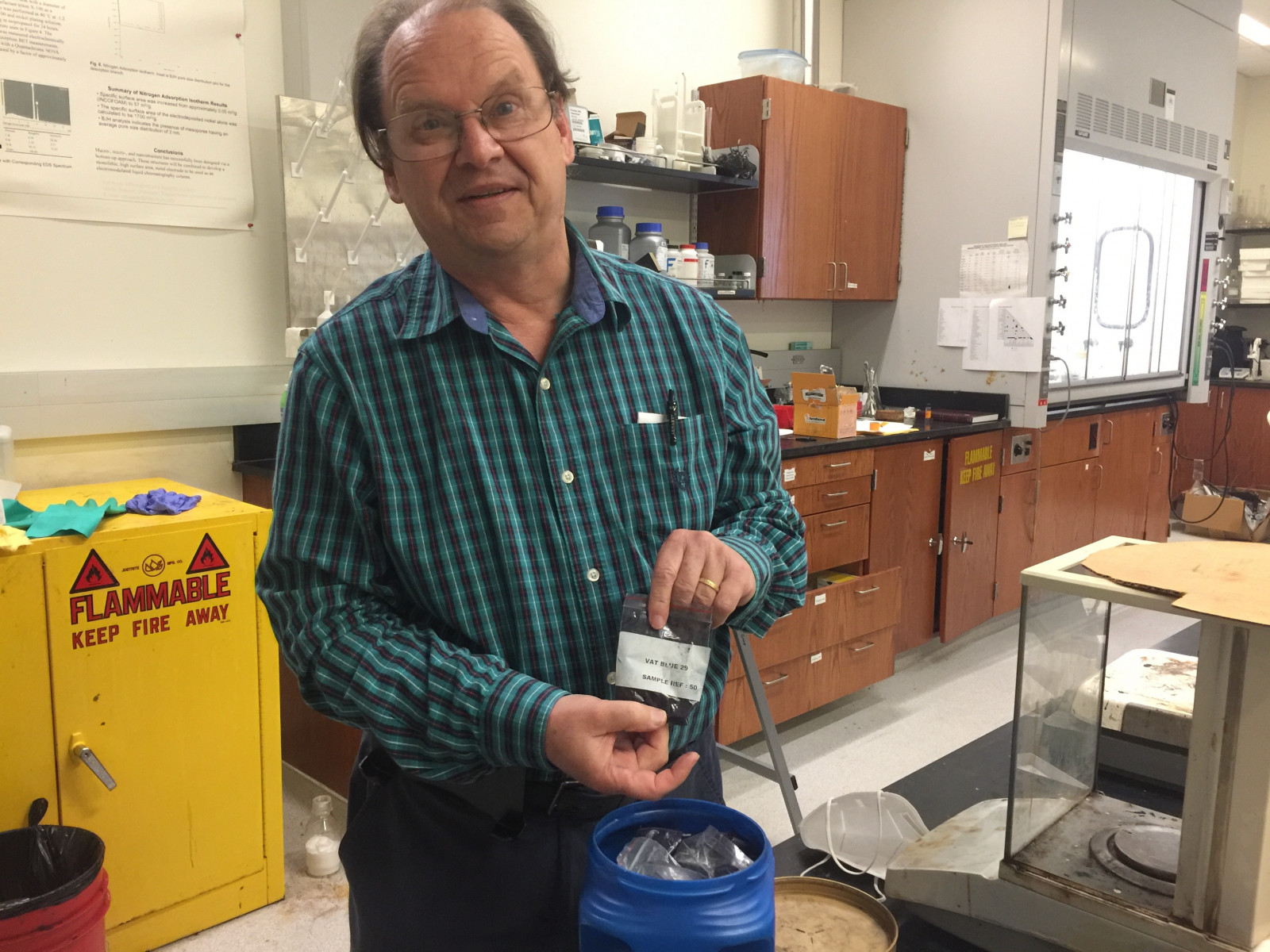
Dr. Martin Bakker
Two University of Alabama faculty are joining forces to advance their research with help from recently received grant money.
Dr. James Harris, chemical and biological engineering assistant professor, and Dr. Martin Bakker, chemistry and biochemistry associate professor, received a grant for $520,710 from the National Science Foundation to study the encapsulation of organometallic complexes within zeolites and their use in the oxidation of light alkanes.
Harris and Bakker are researching the production and scientific pathways in order to make catalysts to convert domestic light alkanes — methane, ethane, propane — into alcohols. The conversion of these alkanes can reduce greenhouse gas emissions of chemical, gas and petroleum industries. For example, this method could convert an alkane such as methane from shale gas or industrial plant waste streams into its more useful alcohol form, methanol.
“If you burn light alkanes, you get carbon dioxide and very fine carbon particles,” Bakker said. “Breathing them in can have lots of health effects. There’s not an economical way to store and ship these light alkanes. So, we want to turn them into alcohol or ethanol. Now you have a liquid that has actually some reasonable value—you can put it on a tanker and ship it away.”
This research is essential due to the challenge involved in the conversion process of natural gas, Harris said. Catalysts are important to the conversion of alkanes, but they can be imprecise. Through the grant, titled “Spectroscopic and kinetic interrogation of organometallic complexes encapsulated in zeolites for gas-phase alkane oxidation catalysis,” both participants will be able to address said challenges and study new catalysts capable of oxidizing light alkanes adequately.
By working in inorganic zeolites, Harris and Bakker will overcome a general problem in catalysis where there are a range of chemical structures and it becomes difficult to understand which structure is doing the catalysis.
“Hybrid organic-inorganic materials will provide composite materials of well-defined structure to enable precise interpretation of spectroscopic data we plan to collect, including electron paramagnetic resonance spectra here at UA, infrared spectra here at UA, and X-ray absorption spectra at Stanford Synchrotron Lightsource in Menlo Park, California,” Harris explained.
This research is not just tailored to Harris and Bakker. Graduate and undergraduate students in the chemistry and chemical engineering departments will be able to contribute to the research activities. Additionally, K-12 outreach activities will be implemented in the Tuscaloosa area.
Harris and Bakker started working together in February 2020 after they found multiple common interests in research. After realizing they had significant experience and expertise in the field of catalysis, they applied for the grant, with the hope to contribute to the community and society as a whole.
Harris himself has hopes of growing his independent research lab at UA. This first grant awarded will aid in the initiative.
“This [grant] will allow us to perform cutting edge research and build collaborations with the Bakker lab here at UA, and others in catalysis, while growing our research group and its capabilities,” Harris said.